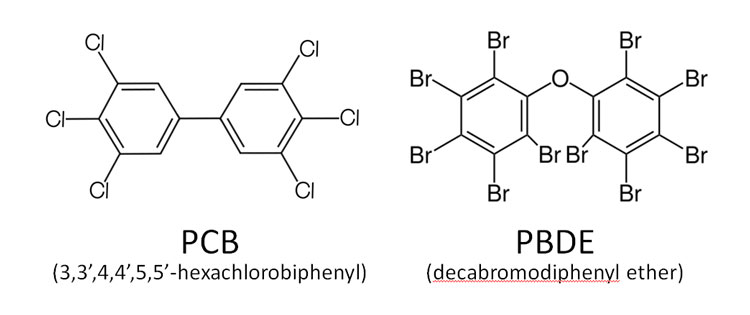
Persistent organic pollutants, also known as POPs, have a bad habitat of turning up in even the remotest regions on Earth. Two types of POPs in particular — polychlorinated biphenyls (PCBs) and polybrominated diphenyl ethers (PBDEs) — are well known contaminants of Arctic ecosystems despite the fact that the main sources of such pollutants reside far away in industrialized areas. Now, it appears that the Mariana Trench and Kermadec Trench can be added to that list of remote ecosystems that are contaminated by these chemicals. Scientists recently detected PCBs and PBDEs in crustaceans from the deepest parts of the ocean ever sampled.
The deep-sea crustaceans, called amphipods, were collected during two expeditions in 2014 to the Mariana Trench and the Kermadec Trench, both of which are located in the Pacific Ocean. The Mariana Trench is the deepest region of the ocean and has a depth of 10,994 meters (36,070 feet). The Kermadec Trench is also very deep and has a depth of 10,047 meters (32,963 feet). In comparison, the average depth of the ocean is only about 3,688 meters (12,100 feet).

Amphipods collected at depths of 7,000 to 10,000 meters were brought back to the laboratory and tested for the presence of PCBs and PBDEs. The preliminary data—the results were reported at a conference and have not yet been formally published in a science journal—confirmed that PCBs and PBDEs were present in the deep-sea amphipods. A brief article that appeared in the journal Nature on June 20, 2016, summarized these new and very significant findings.
The scientists found high concentrations of PCBs in amphipods from the Mariana Trench, and the concentrations were even higher than those in similar species collected from coastal waters off China. PCBs were also detected in amphipods from the Kermadec Trench, albeit at lower concentrations. The amphipods from the Kermadec Trench did, however, contain high concentrations of PBDEs, and somewhat lower but still significant levels of PBDEs were also detected in amphipods from the Mariana Trench.
PCBs were once commonly used in electrical equipment, but most countries stopped their production decades ago because of concerns over their toxicity and ability to persist and accumulate in the environment. PBDEs were widely used as flame retardants in consumer products, but they too are now being phased out of production because of environmental concerns. Chemicals that are persistent, which means that they do not break down readily in the environment, can travel long distances around the world from the point of release. Scientists refer to this as long-range transport, and it is one of the key reasons that many manufacturers are looking for safer alternatives to the use of POPs in consumer products and industrial processes.

Alan Jamieson is a deep-ocean researcher at the University of Aberdeen in the UK, and he first reported the new results at a conference in Shanghai in early June 2016. He said:
We often think deep-sea trenches are remote and pristine, untouched by humans. The take-home message is that when you dump rubbish into the sea, it will ultimately sink. When [pollutants] fall into the trenches, they have nowhere else to go. So they’re just going to keep building up.
Other scientists including Jeffrey Drazen from the University of Hawaii expressed concern over the new results. He said:
It’s really surprising to find pollutants so deep in the ocean at such high concentrations.
Presently, it is not known exactly how the PCBs and PBDEs made their way into the deep ocean trenches. In my opinion, it is very likely that long-range transport via ocean currents played a key role.
Enjoying EarthSky? Sign up for our free daily newsletter today!
Bottom line: Scientists have detected persistent man-made chemicals in crustaceans from the deepest parts of the ocean ever sampled—the Mariana Trench and Kermadec Trench. The new results were first reported at a scientific conference in early June 2016.











